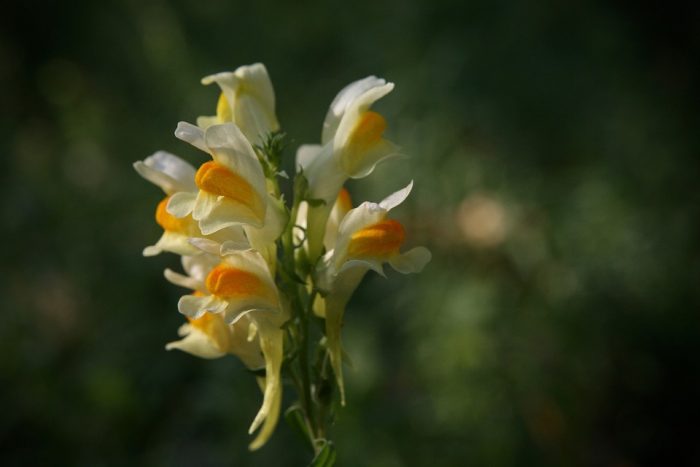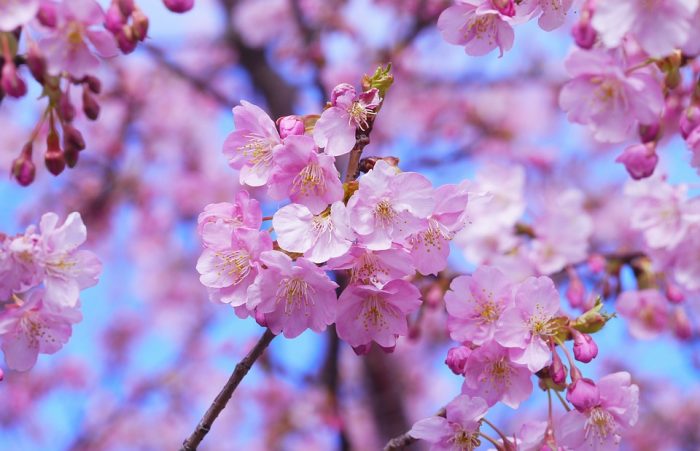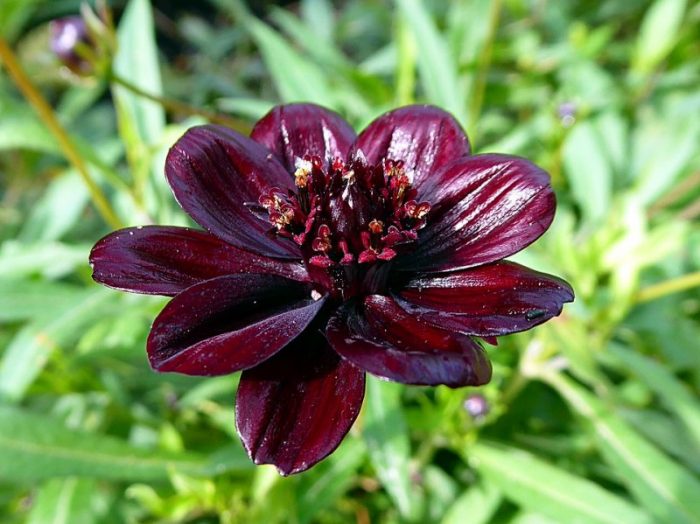
How many different types of flowers are there in the world? This is actually a very difficult question to answer as it depends on who you speak to and how the flowers are classified. It is estimated that there are somewhere between 250,000 to 400,000 flowering species on the planet, though only around 230,000 of these have been described. Hundreds of thousands more flowering plants have been removed from official lists due to discoveries of duplicate species.
Creating a list of all known flower types in the world is essentially impossible, though some biological compendiums have done an admirable job collecting and classifying as many flower species as they can.
Common Flower Types:
Below are some of the more common types of flowers:
Aconite, Anemone, Angelica, Aster, balloon flower, balsam, begonia, begonia, Bellflower, bloodroot, Buttercup, California poppy, caramel flour, carnation, chrysanthemum, coleus, Cosmos, daffodil, dahlia, Dusty Miller, fennel, foxglove, Gazania, geranium, goat’s beard, Hollyhock, Iris, lady’s mantle, lavender, lily, maiden pink, marigold, moonflower, morning glory, nasturtium, orchid, osteospermum, pansy, perennial flax, petunia, primrose, red valeria, rose, rue, sanvitalia, scarlet sage, sea lavender, shooting star, snowdrop, sunflower, tansy, torenia, trillium, tulip, violet, Virginia Bluebell, wild senna, wind flower, yarrow, zinnia.
Let’s take a closer look at some specific examples of some of the most interesting and notable species of flowers:
Titan Arum
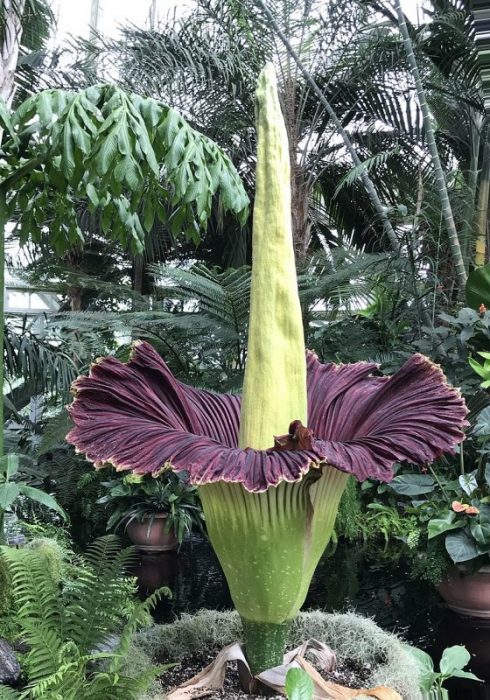
Photo: By Sailing moose – Own work, CC BY-SA 4.0, https://commons.wikimedia.org/w/index.php?curid=70296828
The titan arum, scientific name Amorphophallus titanum, is known for its incredibly large inflorescence, which is actually the largest unbranched inflorescence out of all known flowers. Like some other flowers, such as the corpse flower, the titan arum is known as a carrion flower, due to the fact that it gives off an odor which is said to smell like a carcass or rotting corpse. The large inflorescence of the plant can reach over 3 m or 10 feet in height, and the flower has a dark red texture on the inside. The titan arum frequently needs to grow for 7 to 10 years before it will even bloom the first time, and the plant will typically only bloom every 2 to 3 years.
Sea Poison Tree
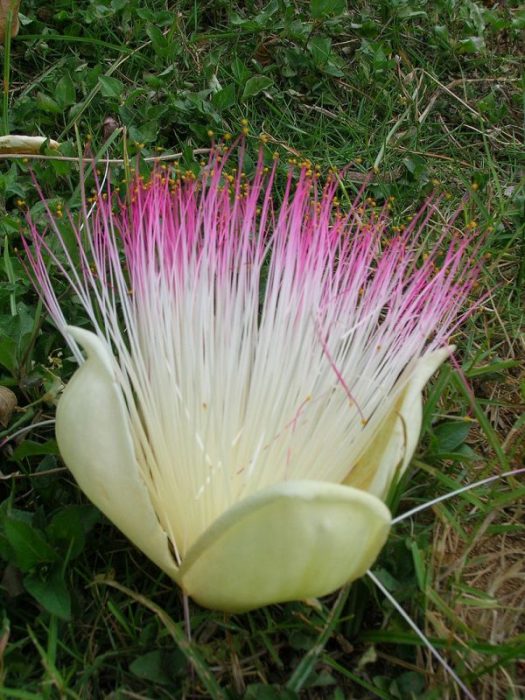
Photo: By Forest & Kim Starr – , CC BY 3.0, https://commons.wikimedia.org/w/index.php?curid=3693375
The fish poison tree, or sea poison tree, is native to mangrove habitats found across the West Pacific and Indian oceans. It can be found in countries like the Philippines, the Solomon Islands, and French Polynesia. The plant gives up box-shaped fruits, and when it blooms the flowers have a spiky pinkish-white look to them, and they give off a sweet smell which attracts moths and bats that will pollinate the flowers.
Jade Vine
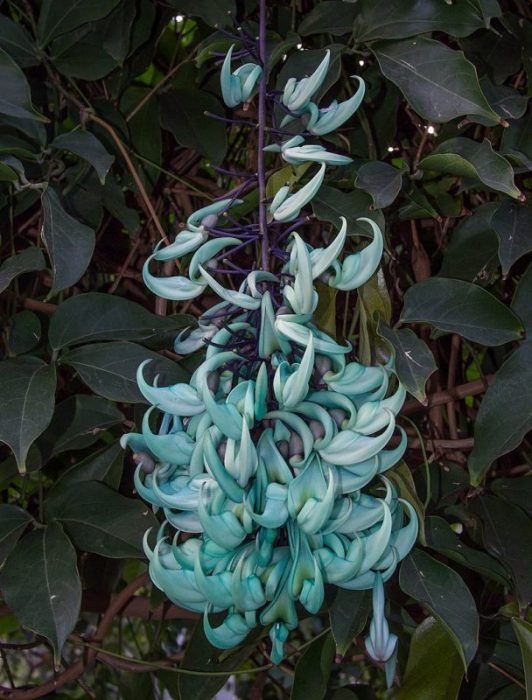
Photo: By Rhododendrites – Own work, CC BY-SA 4.0, https://commons.wikimedia.org/w/index.php?curid=69113683
The Jade vine or turquoise jade vine is a type of vine found within the Philippines in tropical forests. It is known for its intense turquoise/jade coloration. It creates many cloth shaped flowers which curve upwards and can become quite long, sometimes up to 3 m long. The plant grows in ravines or alongside streams in tropical forest areas, and they have evolved to be pollinated by a certain species of bat that latches onto the flowers and hangs upside down to drink its nectar.
Torch Ginger
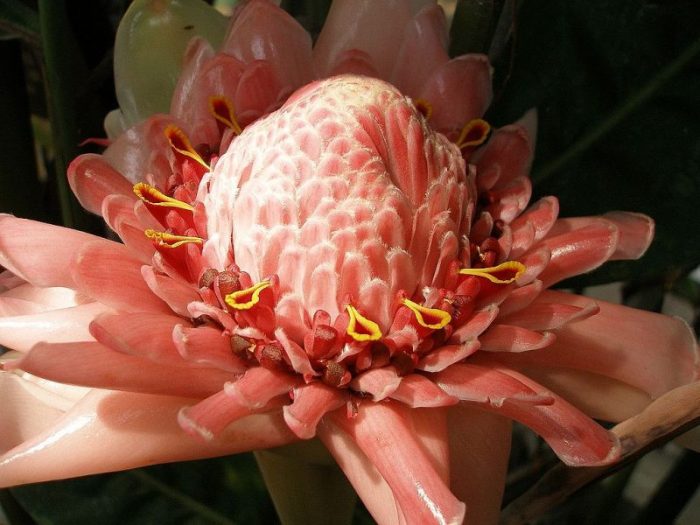
Photo: By tanakawho – originally posted to Flickr as Torch ginger, CC BY 2.0, https://commons.wikimedia.org/w/index.php?curid=4731220
The torch ginger, also known as the Indonesian Torch Ginger, is a perennial plant found across Southeast Asia. The flower is known for its bright red and pink colored petals. The flowers are sometimes used it to create a fish dish, while the bottom portion of the flower’s trunk is often used to create a chili sauce in North Sumatra. When fully bloomed, the upper portion of the flower looks like a pinecone or pineapple surrounded by wider red petals.
Snapdragon Flower
Snapdragons, or Dragon flowers, are called snapdragons because of the fact that the flowers resemble the face of the Dragon. There are around 21 different recognized species of snapdragons. Snapdragons are important plants within gardens, and they are frequently used as container plants, to create borders, or as bedding in both temperate and tropical climates. Snapdragons are native to North Africa, parts of the United States, and Europe.
Night Blooming Cereus
The night blooming cereus refers to various different ceroid cacti which only bloom at night. These particular flowers are quite short-lived, and some specific species of night blooming cereus only bloom once every few years for a single night. The most popular variant of the night blooming cereus is the Queen of the Night, frequently grown indoors. The petals of the flower are a brilliant white when it blooms, and the flower petals wilt before dawn.
Corpse Flower
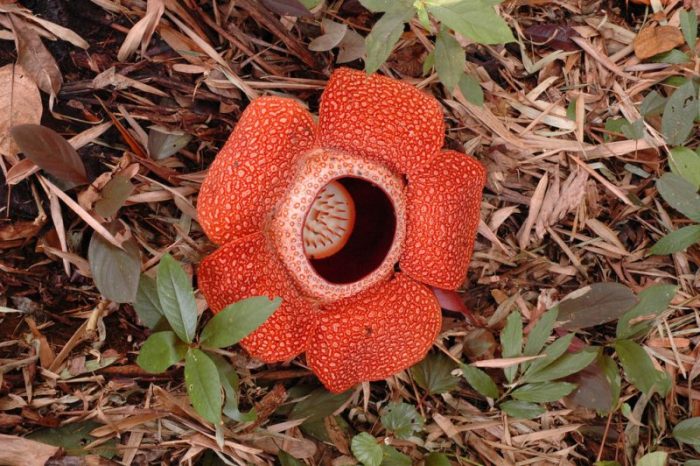
Photo: By Steve Cornish, CC BY 2.0, https://commons.wikimedia.org/w/index.php?curid=1449126
The rafflesia is a specific genus of flowering plants, with approximately 20 different species in the genus. All of the species are found across Southeast Asia, primarily throughout the Philippines, Thailand, Malaysia, and Indonesia. The Rafflesia plant doesn’t have any visible roots, leaves, or stems, rather it is a single large flower that blooms out of a parasitized vine. The flowers are a dark red with oranges spots on them, and they are said to smell like rotting flesh which gives the flower the name corpse flower. The odor serves to attract flies to them, which then assists the plant in pollination.
Flame Lily
The flame lily, or fire lily, are found in tropical regions across Asia and Africa. They’ve also been naturalized in Australia and in various Pacific countries. The fire Lily is known for its bright red petals which are dynamically curved.
Bird Of Paradise
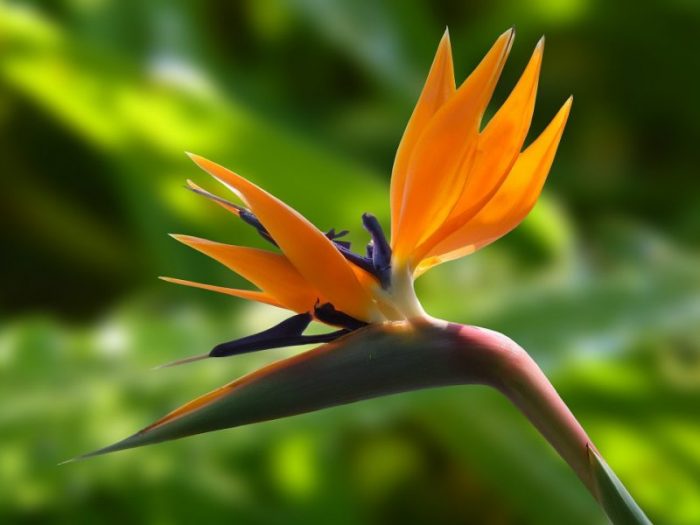
Photo: ADD via Pixabay, CC0
The Bird of Paradise flower, or Strelitzia, refers to five different species of plants native to South America, which have been called the Bird of Paradise flowers because of their resemblance to tropical birds of paradise. A subspecies of the plant can also be found in South Africa where it is referred to as the Crane flower. The largest species in the genus can reach approximately 10 m tall and it has bright white and blue flowers. The other species in the genus have orange or purple flowers. The flowers become pollinated by sunbirds, with the pollen resting on the feet of the birds when they perch upon the plant.
Bleeding Heart

Photo: By Wuzur – Own work, CC BY-SA 3.0, https://commons.wikimedia.org/w/index.php?curid=4070371
Bleeding hearts are flowering plants In the poppy family, and they are found around Japan, China, Korea, and Siberia. They are called bleeding hearts because of their heart-shaped compound leaves, which are usually bright pink on the outside and white on the inside, with a droplet of white petals coming out of the larger pink structure. When they are pulled apart, the two inner petals resemble a woman in a bath, leading to the other common name for the plant: “lady in the bath”.
Snake’s Head
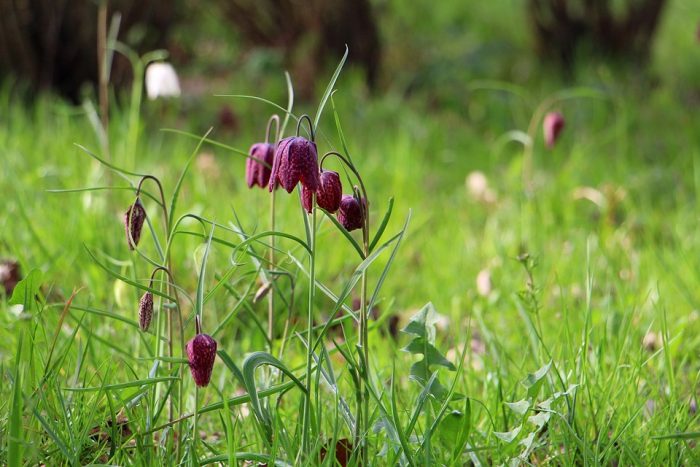
Photo: Aniusz via Pixabay, CC0
The Snake’s Head flower, also called the chess flower and the frog cup, is found in parts of Western Asia and Europe. The flower is an endangered species in the wild in many parts of Europe. The name snakehead likely comes from the appearance of these flowers, which arranged in a bell that resembles a snake’s head. The flowers have a checkered pattern on them, with interchanged dark and light areas of purple.
Cherry Blossom
Cherry blossoms refer to the flowers a handful of different trees within the genus Prunus. The most famous of these is the Japanese Cherry Blossom, or Prunus serrulata. Cherry blossoms are distributed throughout much of the northern hemisphere in temperate regions including Japan, China, Iran, Afghanistan, West Siberia, Korea, Taiwan and India. The Japanese Cherry Blossom is the national flower of Japan. The blooming of the cherry blossoms is a nationally recognized event in Japan, and flower viewing parties occur regularly during the blooming season.
Ghost Orchid
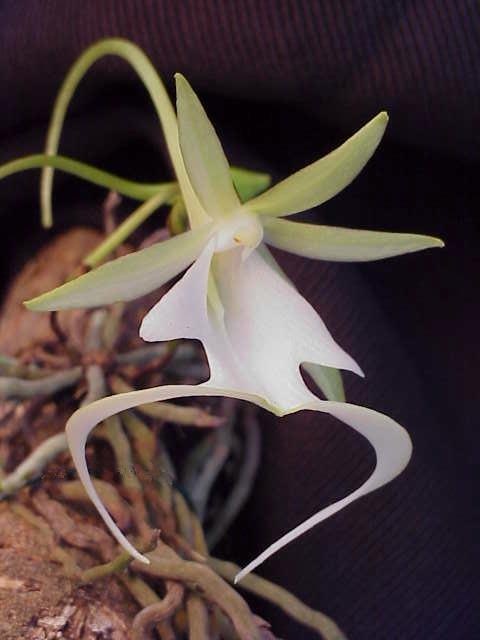
Photo: By Mick Fournier / HBI Producers of Fine Orchids [1] – Mick Fournier (own work), CC BY 2.5, https://commons.wikimedia.org/w/index.php?curid=2426500
Chocolate Cosmos
The chocolate cosmos flower is a species of cosmos found in Mexico, and it gets its name from the brownish-red petals it has, as well as the fact that it has a scent that resembles chocolate. These attributes make it a popular plant for cultivation. The flower is usually found naturally in oak and pine forests that have an elevation of between 1800 to 2450 m. The flower usually blooms in the mid to late summer.




